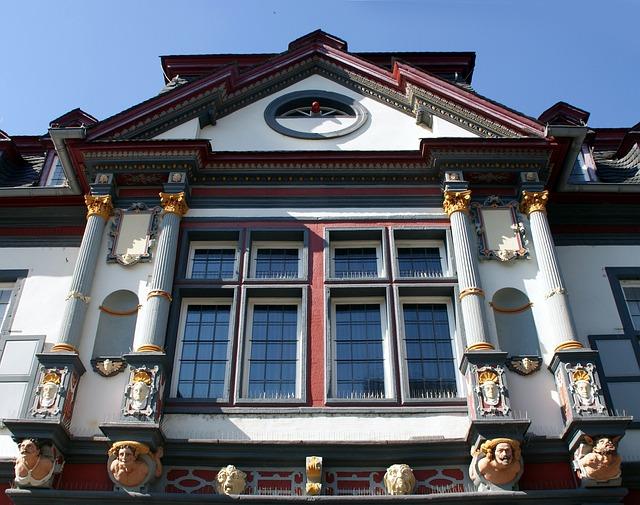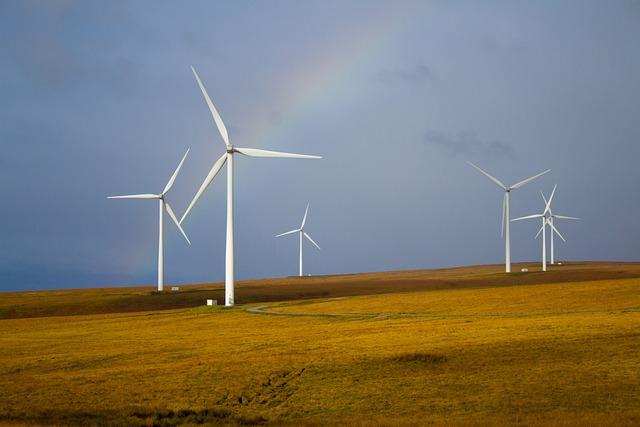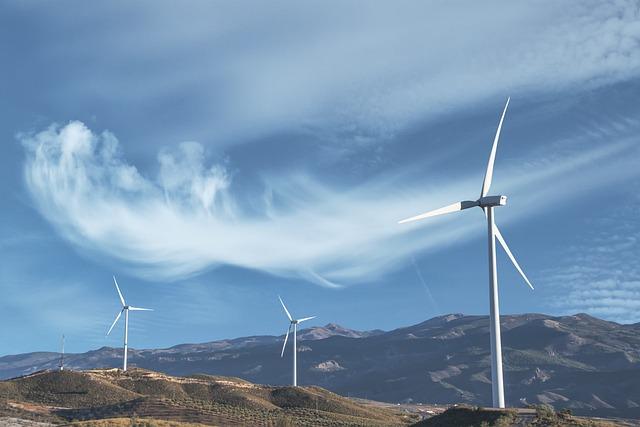president von der Leyens Imaginative and prescient for Vitality Independence within the Baltics
Throughout her current go to to Lithuania,President von der Leyen outlined a forward-thinking technique aimed at enhancing vitality independence for the Baltic states. In a area traditionally reliant on exterior vitality sources, this imaginative and prescient emphasizes the essential want for sturdy infrastructure and cooperative frameworks among the many Baltic nations. The key parts embody:
Grid Synchronization: Aligning vitality programs with European networks to enhance reliability and stability.Funding in Renewables: Prioritizing photo voltaic, wind, and biomass vitality to increase native technology.Cross-Border Collaborations: Foster partnerships with neighboring international locations to make sure vitality safety.
Furthermore, the dedication to sustainability and innovation is a cornerstone of her discourse, aiming to create a self-sufficient vitality ecosystem within the Baltics. Committing to the European union’s Inexperienced Deal, President von der Leyen envisions a transition in the direction of inexperienced applied sciences that not onyl cut back dependency on fossil fuels but in addition contribute to decreasing carbon emissions. The following initiatives had been highlighted:
InitiativeDescriptionEnergy Effectivity ProgramsEnhancing vitality use in buildings and trade.Good Grid technologiesImplementing superior applied sciences for higher vitality administration.Public-Non-public PartnershipsStimulating funding in infrastructure via collaboration.

Strategic Significance of Grid Synchronisation for Lithuania and Its Neighbours
The strategic significance of grid synchronisation for Lithuania and its neighbouring international locations can’t be overstated.Because the area seeks a extra built-in and sturdy vitality market, aligning {the electrical} grids will foster higher reliability and resilience in opposition to potential disruptions. This synchronisation isn’t solely a pivotal step in the direction of vitality independence but in addition a key to enhancing regional cooperation. By linking their energy programs, Lithuania and its Baltic counterparts goal to:
Scale back vitality dependence on single suppliers, diversifying sources and enhancing safety.Enhance vitality effectivity, permitting for higher administration of demand and provide throughout borders.Help sustainable vitality targets by facilitating the mixing of renewable vitality sources into the grid.Strengthen resilience in opposition to exterior shocks and market volatility.
Moreover, synchronising the Baltic grid with the broader European energy community is essential to fostering financial development and stability within the area. By bettering interconnectedness,Lithuania can increase commerce alternatives and entice investments in vitality infrastructure. The event brings forth potential advantages that embody:
Advantages of Grid synchronisationDescriptionEconomic GrowthIncreased commerce and funding in vitality tasks.Vitality SecurityDiversified provide and diminished threat of energy shortages.Sustainabilityenhanced integration of clear vitality applied sciences.
This alignment with european vitality programs marks a transformative milestone for the Baltics, facilitating not simply vitality transition but in addition positioning Lithuania as a key participant within the regional vitality panorama.

Commissioner Jørgensen on Sustainable Vitality Options in the Baltic Area
Throughout a current go to to Lithuania, Commissioner Jørgensen emphasised the essential significance of sustainable vitality options within the Baltic area, notably within the context of the grid synchronisation challenge. This initiative goals to combine the Baltic electrical energy programs with these of the eu union, enhancing vitality safety and fostering a extra resilient energy grid. Commissioner Jørgensen acknowledged that the transition to renewable vitality sources will play a pivotal position in reaching this goal, because it not solely reduces dependency on fossil fuels but in addition bolsters native economies.
To facilitate this transition, a number of key methods had been highlighted by the Commissioner, together with:
Funding in Renewable Applied sciences: Encouraging the adoption of photo voltaic and wind vitality programs throughout the Baltic states.Infrastructure Growth: Upgrading current vitality infrastructure to accommodate new applied sciences and improve grid stability.Regional cooperation: Strengthening partnerships amongst Baltic international locations to share sources and greatest practices for sustainable vitality implementation.Key Areas of FocusExpected OutcomesRenewable Vitality InvestmentsIncreased vitality independenceSustainable InfrastructureImproved grid resiliencyCross-border CollaborationEnhanced vitality safety

Vitality Transition Challenges: insights from Commissioner Kubilius
Throughout a current go to to Lithuania, Commissioner Kubilius highlighted the multifaceted challenges confronted through the vitality transition within the Baltic area.He identified that whereas synchronizing with the Continental European grid marks a major step for the Baltics,a number of obstacles stay. These embody:
Infrastructure deficits: Inadequate grid capability and outdated expertise require instant upgrades.Funding gaps: Securing funds for inexperienced vitality tasks is essential for sustainable growth.Regulatory harmonization: aligning nationwide rules with EU requirements poses complexity for efficient implementation.
Furthermore, Kubilius emphasised the significance of public acceptance and engagement in the vitality transition. For this,he proposed a sturdy framework specializing in instructional initiatives and neighborhood involvement.He acknowledged that involving native populations can successfully deal with issues about new vitality infrastructures. The next measures had been advised:
Proposed MeasuresExpected ImpactAwareness CampaignsEnhance public understanding of vitality issuesStakeholder ConsultationsGather helpful native insights and foster collaborationCommunity ProjectsEncourage neighborhood funding in renewable vitality

Suggestions for Enhancing Cross-Border Vitality Cooperation
To bolster cross-border vitality collaboration in the Baltic area, a number of strategic suggestions might be carried out.Firstly, enhancing integrative infrastructure is paramount; this will be achieved by investing in trendy interconnectors that facilitate smoother electrical energy alternate among the many Baltic states. Secondly, fostering regional vitality safety via joint reserve programs will enable these nations to share sources throughout peak calls for and emergencies. Furthermore, increasing collaborative platforms amongst vitality regulators and market operators will guarantee harmonized insurance policies and requirements, paving the best way for environment friendly vitality commerce.
Moreover, selling analysis and growth initiatives that focus on renewable vitality applied sciences can considerably help regional sustainability targets. Key initiatives may embody:
Joint investments in offshore wind vitality tasks that capitalize on the Baltic Sea’s potential.Establishing shared vitality effectivity packages to cut back consumption throughout all member states.Implementing instructional campaigns to elevate public consciousness about vitality cooperation advantages and sustainable practices.
To trace the progress of those initiatives, a collaborative monitoring framework could possibly be established, making certain openness and accountability all through the implementation part.

The Path Ahead: Making certain Resilience By Collaboration and Innovation
As Lithuania takes important strides in the direction of grid synchronisation with the remainder of Europe, collaborative efforts between President von der Leyen and Commissioners Jørgensen and Kubilius spotlight the significance of resilience in vitality infrastructure. This initiative isn’t merely a technical enhancement; it’s a essential step in the direction of making certain vitality safety throughout the Baltics.The mixing of the Baltic energy grids into the European system signifies a collective dedication to a contemporary vitality panorama—one which prioritises stability, sustainability, and shared sources. Key elements of this initiative embody:
Infrastructure Growth: Upgrading current amenities to meet European requirements.Regulatory Alignment: Harmonising insurance policies to facilitate smoother operations.Funding in Renewable Vitality: Boosting the share of renewables within the vitality combine.
Furthermore, via progressive applied sciences and coordinated methods, the Baltics can improve their vitality resilience in opposition to exterior shocks and market fluctuations. The trail ahead will possible contain a multi-faceted strategy, mixing conventional vitality sources with pioneering options. On this context, collaboration performs a pivotal position, not simply at a governmental stage but in addition involving stakeholders from numerous sectors, together with personal enterprises and academia.the upcoming vitality convention will function a platform to discover these synergies, enabling the Baltic states to place themselves as leaders in vitality independence and sustainability.
Key AreasDescriptionInfrastructureModern upgrades to make sure reliability.InvestmentIncreased funding for renewable tasks.Policyunified regional approaches to vitality governance.

The Conclusion
President Ursula von der Leyen’s go to to Lithuania, alongside Commissioners Jørgensen and Kubilius, underscores the European Union’s unwavering dedication to vitality safety and integration inside the Baltic area. As the synchronisation of the baltics’ electrical energy grids turns into a pivotal milestone, it not solely enhances the area’s vitality independence but in addition strengthens its ties with European vitality markets. The discussions held throughout this go to had been instrumental in forging a path in the direction of a extra resilient and interconnected vitality framework, important for the way forward for the Baltic states. As europe grapples with the complexities of vitality transition and geopolitical challenges, the collaborative efforts exemplified on this summit sign hope for a extra unified and steady vitality panorama. The steps taken at this time are essential,not simply for the instant future,however for a sustainable vitality ecosystem that may profit generations to come back.
Source link : https://europ.info/2025/02/25/lithuania-2/president-von-der-leyen-and-commissioners-jorgensen-and-kubilius-in-lithuania-in-view-of-the-baltics-grid-synchronisation-energy-2/
Creator : Ethan Riley
Publish date : 2025-02-25 08:44:00
Copyright for syndicated content material belongs to the linked Source.


